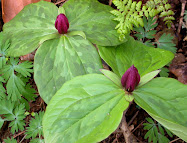Anza-Borrego
Desert Narrows Earth Trail in “Powder Dump Wash”.
In the
1930’s road crews called this wash “Powder Dump Wash” because this was where
they kept explosives. Below is a photo of part of a concrete and boulder wall from
the building where they were stored. Noticed the fault line next to it.
Now this
wash has become the Narrows Earth Trail with good geological examples of how this
region was formed. I thought
Anza-Borrego was all about flowers so I was surprised to find a geological
trail. Here is what I found and learned.
Over 100 million years ago hot liquid rock, called magma thrust into the
earth’s crust forming igneous rock. As
it cooled, it crystallized into minerals and became granite. Later erosion exposed the granite and broke
it down even further into sand.
This region
had experienced and continues to have earthquake faults and because of that
there are sections of older sedimentary rock next to the granitic rock. The sedimentary rock had pockets of softer
material here and there and over time, rain and wind removed the softer rock,
leaving these holes.
Anza-Borrego
has thousands of small faults like the one below. The rounded edges of the
contact zone caused by constant movement and the different kinds of rock
material are distinct features of a fault. The fault lines in this valley
create cracks in the earth that allows water to seep up and provided the needed
water for the many palm oases.
The rock
below is metamorphic, which means it has been changed by pressure, heat or
chemical action. When this rock was at
the bottom of the sea, about 450 million years ago, this cliff was located
south of what we now call Guaymas, Mexico. You can see how the layers have been
pushed, squeezed and turned on their sides.
As I left I
turned around for a parting shot of the alluvial fan sloping down the mountain
caused by heavy rain as it carried the sand and gravel down the mountain.
This short
walk was a reminder of how we are always surrounded by active processes of
geology. I could have found many of these same features in my home state of West
Virginia that I have described here. I am always amazed at how our earth has exploded, bent, oozed, and moved all around. Once I began to notice geological features, it is hard to go anywhere without noticing and it makes my journey all the more interesting.












































+DSCN5800+for+blog.jpg)



